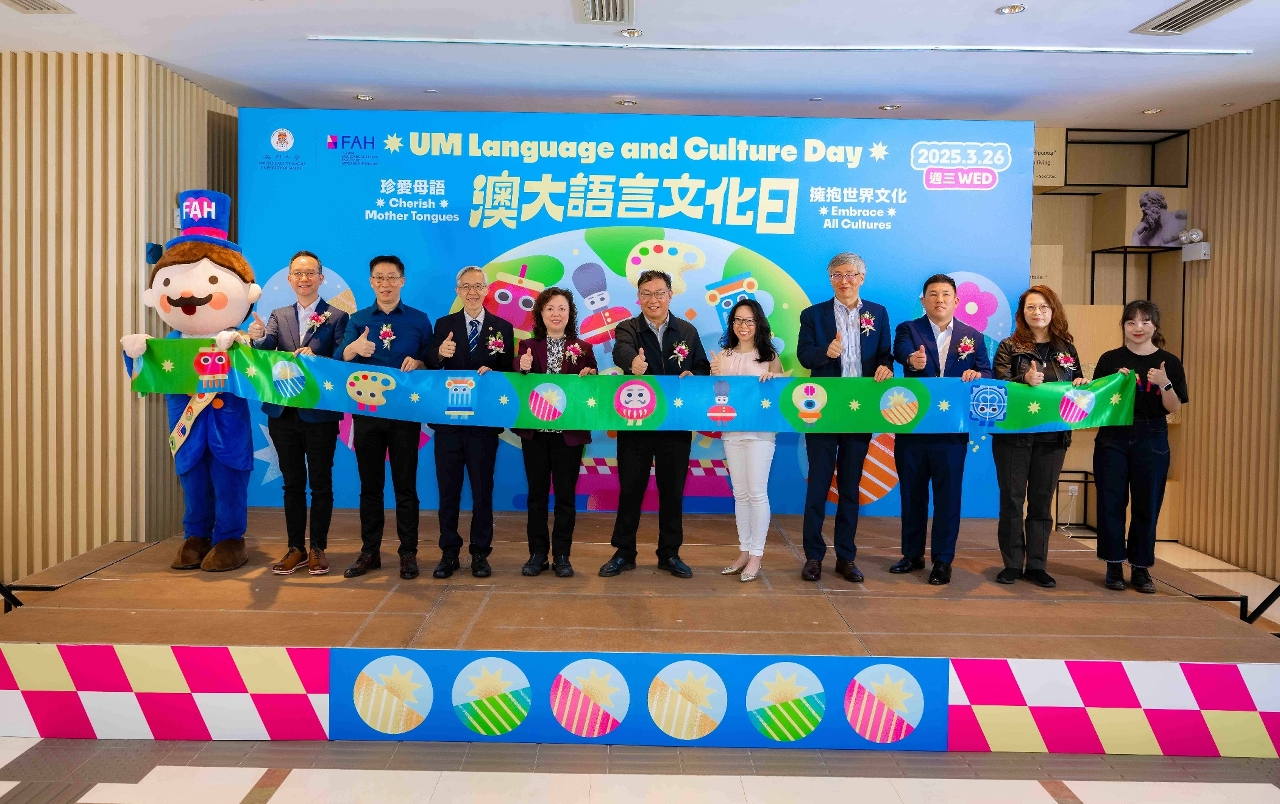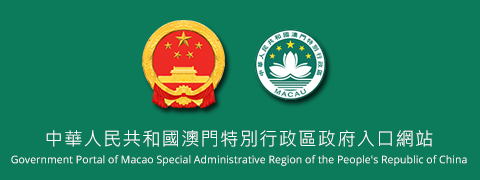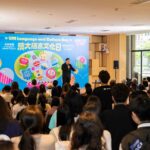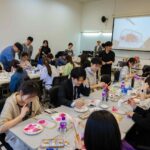 The opening ceremony of the Sixth UM Language and Culture Day
The opening ceremony of the Sixth UM Language and Culture Day
The Faculty of Arts and Humanities (FAH) of the University of Macau (UM) held the Sixth UM Language and Culture Day. Themed ‘Cherish Mother Tongues, Embrace All Cultures’, the event aimed to promote the preservation of language and culture and bridge the gap of intercultural communication. Students and faculty from different countries and regions showcased UM’s cultural diversity through a series of performances and workshops, attracting over 200 UM members.
The Language and Culture Day is a signature event of FAH. It aims to promote the preservation of various mother tongues and develop students’ critical thinking by presenting different cultures. In his speech, Xu Jie, dean of FAH, said, ‘Macao is a natural laboratory for many languages and a living museum of multiculturalism. Cherishing our mother tongues is a way of respecting our nations. Embracing multiculturalism allows us to see the world in a multi-dimensional and dynamic way through the unique perspectives of different cultures.’
At the opening ceremony, UM students and faculty presented a cultural showcase, including performances of folk songs and pop songs, instrumental recitals, and Tai Chi demonstrations, to highlight the distinctive cultures of China, Japan, Europe and America, leaving a lasting impression on the audience. The event also featured the ‘Cultural Treasure Hunt’, various handcraft workshops, and presentations of the traditional cultures of different countries, allowing participants to experience the charm of different languages, cultures, ideas, and histories.
The opening ceremony was officiated by Yang Liu, college master of Ma Man Kei and Lo Pak Sam College; Wong Ka Ki, director of the Centre for Teaching and Learning Enhancement; and Pang Chap Chong, dean of students.




